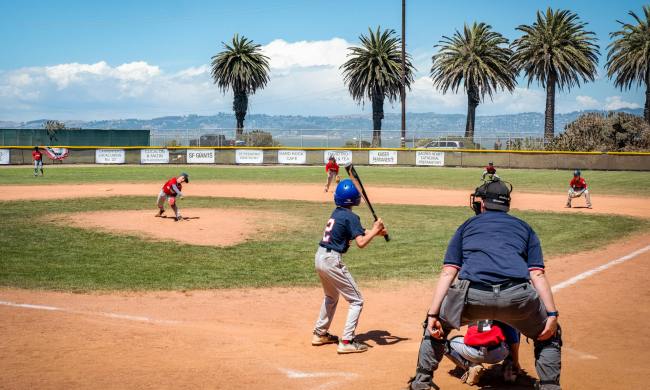Every parent can agree that chores are an important part of a child’s responsibility. Having kids do assigned chores helps ensure that everyone is contributing around the house. Doing chores also teaches school-age kids important life skills. You may not want to think about it now, but those tweens and teens will be heading off to college or the real world soon enough, so they need to know how to look after themselves as well as their dorm room or apartment. Having children do chores, even outdoor chores, at a young age, teaches teamwork and helps instill a strong work ethic while introducing kids to time management.
Tying chores to earning a weekly allowance has its bonuses, as well. Earning an allowance is a teaching tool in itself, introducing kids to the relationship between work and pay. Having an allowance also showcases another vital life skill — the difference between want and need. When kids spend their own hard-earned money, they learn to stop and think before making a purchase.
Outdoor chores for kids are a great way to get school-aged children in the habit of helping around the house. Unlike inside chores, like making a bed or cleaning the kitchen, even younger children can pitch in with outside chores. Completing outside chores also gets kids fresh air while doing physical activities, which is a win-win.
Safe outdoor chores for kids

When sending kids outside to do chores, remember safety is first. Lots of outdoor tools like leaf blowers and mowers are useful devices, but not necessarily something kids, even teens, should have their hands on until they’re ready. Here are 10 outdoor chores for kids that are safe, easy to do, and a big help to you.
1. Cleaning up before a mow
A simple backyard chore is to have kids put away any toys on the lawn before you mow it. Picking up sticks or big rocks and placing them in a designated bin also helps to get the lawn ready for the mower. This is a chore that even preschoolers can lend a hand with.
2. Sweeping
Whether it is after the lawn is mowed or cleaning dirt off the front porch, sweeping is an accessible chore that children of all ages can do. Get a kid-sized broom for little ones, and they will enjoy it more.
3. Weeding
This easy-to-do chore can be a pain in the back for adults but not too difficult for kids. Just make sure to point out beforehand what is OK to pull and what is not.
4. Planting flowers or seeds
Gardening is a fun chore to do with kids of all ages. Kids can help clean out the flower or vegetable garden bed, and then dig holes for plants or seeds. With assistance, even younger children can help put plants, seeds, or bulbs in the ground.
5. Watering
Once a flower or vegetable garden is in the ground, the plants need to be watered. While adults may be too busy with work and other chores, having children use a watering can or the hose gives you a break and gets the plants watered.
6. Raking
When fall rolls around and the leaves change colors, it signals the time for the annual fall raking ritual. Raking is usually an all-hands-on-deck time for the entire family. Kids can most certainly help rake and bag leaves. Outfitting them with a child-sized rake adds a bit of fun to the yearly chore.
7. Washing cars
Cleaning the family cars may be difficult for younger children, but it’s not for tweens and teens. Older kids are also looking forward to getting their learner’s permit down the road, so introducing them to chores regarding car maintenance is another much-needed life skill.
8. Cleaning the inside of the cars
Sometimes, the family cars can feel like moving trash bins, which makes having the kiddos help tidy up the inside of the cars another life lesson. When kids are responsible for cleaning up the accumulating trash, they may learn that getting the garbage in the designated bag saves them work later on.
9. Pool maintenance
If your family has a pool, a great outside chore is having children put away water toys at the end of the day. It’s another low-stress chore that teaches responsibility. Kids can also help with skimming out bugs and leaves. Older teens can take on other pool-related chores like vacuuming. Since water is involved, unlike picking up sticks on the lawn, an adult should be close by for any outdoor chores involving kids and a pool.
10. Hosing down the porch or sidewalk
Using the hose to clean off the front porch, sidewalk, or driveway is trivial for moms and dads, but it’s super fun for kids. You are actually giving them permission to play with water.
Teamwork is important

Teaching your children to do chores both inside and outside the house not only teaches them responsibility but also helps show them the work that comes with maintaining a home. Lots of kids don’t truly understand just how much has to be done around the house, so teaching them these basic yet fundamental chores gives them a sense of pride knowing they are helping with the workload of the home.
It’s also a nice way for parents to spend time with their kids as they show them how to do certain tasks. Parents are busy enough that they don’t need to do all the chores as well, so enlisting the kids with age-appropriate chores really ensures the entire family is working as a team.
Having children help around the home, especially outside, teaches life skills, responsibility, teamwork, time management, and more. When kids earn an allowance through chores, they’ll get spending money for toys, video games, and other things kids want. Earning an allowance also introduces children to the art of saving for things they really want and the basics of budgeting. All these concepts are necessary life skills that build a strong foundation for when your children head off to college.




